The Best Lighting Guide
Nothing does more to enhance the ambiance of a room than thoughtful and well placed lighting. Ensuring you are sizing and hanging your fixtures at the right height, with proper spacing, is essential to creating the perfect space. Working with some of the best designers in the lighting category, combined with our extensive experience selling light fixtures, we've developed a comprehensive lighting guide, organized by fixture type, to provide you with the insight necessary to achieve your goal of creating a warm and inviting space.
- CHANDELIERS
- PENDANTS
- BATH VANITY
- CEILING
- WALL
- OUTDOOR
- FANS
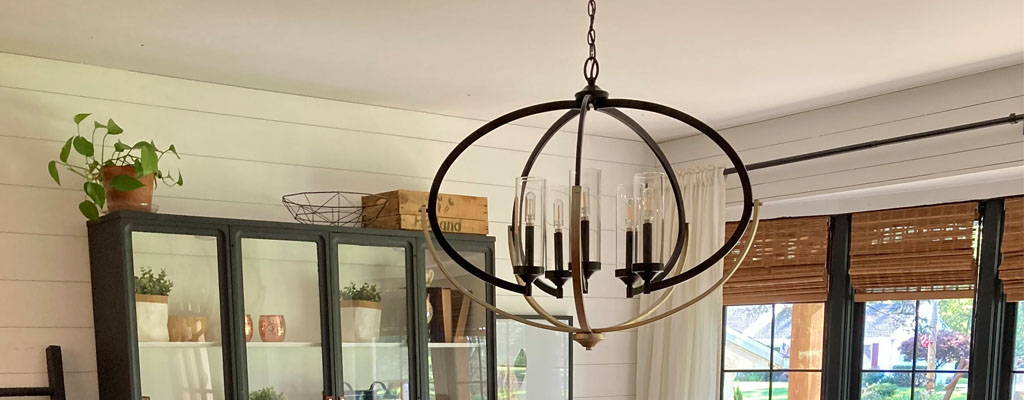
CHANDELIERS
Chandeliers are the most versatile of light fixtures. Found in dining rooms, breakfast nooks, kitchens, living rooms, bedrooms and even bathrooms. These fixtures provide plenty of light and are best utilized in open spaces with sufficient overhead height. In many cases, installing a chandelier is a great opportunity to express your creativity and artistic tastes with a statement. This can be further enhanced through the use of different bulb shapes and styles.
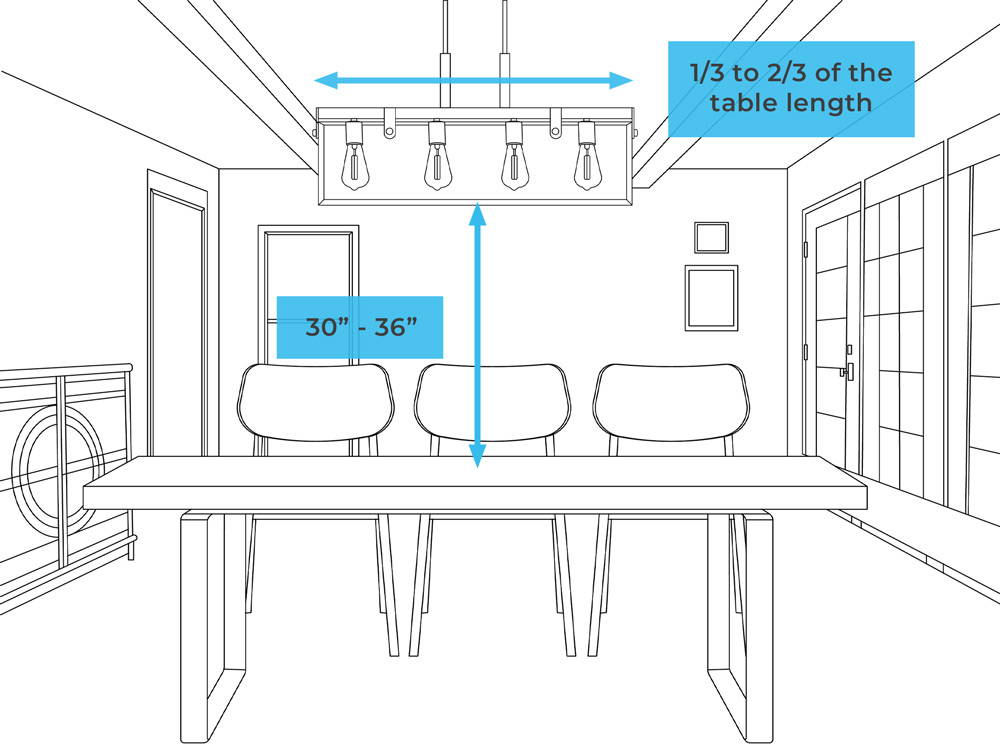
For long dining room tables, chandeliers should be hung 30 to 36 inches above the table and anywhere from one third to two thirds the length of the table.
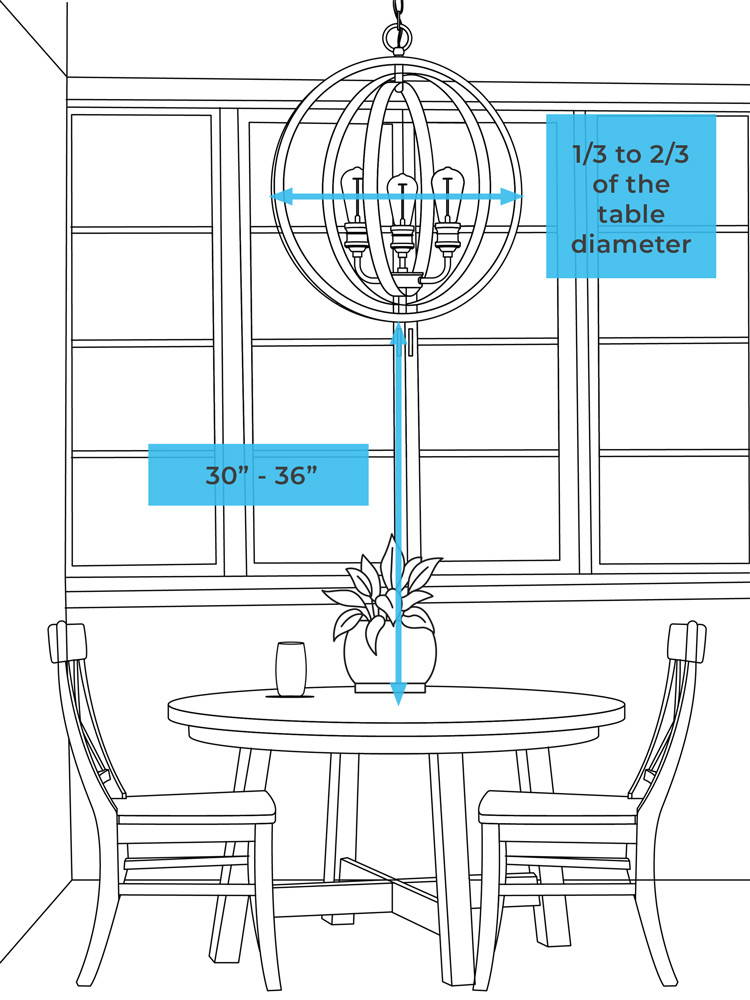
For round dining room tables, chandeliers should be hung 30 to 36 inches above the table and between 1/3 to 2/3 of the table diameter.
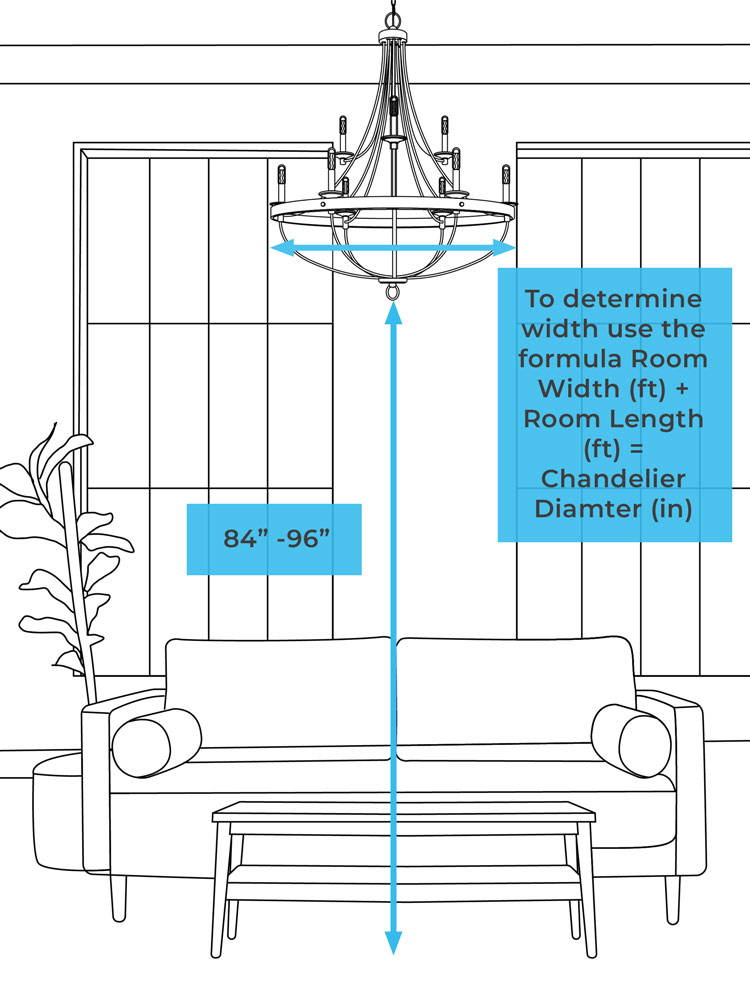
In a living room, chandeliers should be hung at a minimum of 84 inches (7 feet) and ideally 96 inches (8 feet) from the floor to the bottom of the fixture. When considering the width or diameter, you should take the size of the room into consideration. A simple formula is to add the room width (in feet) and room length (in feet) to give you the ideal width (in inches). Example: A living room with the dimensions of 20 ft x 15 ft would need a chandelier with a 35 inch width/diameter.
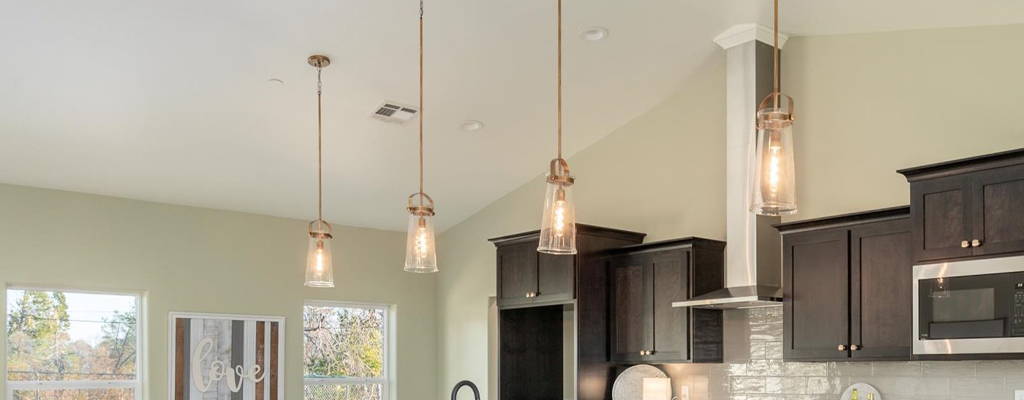
PENDANTS
Pendants have traditionally been the go to fixture for kitchen islands as they provide ample working light throughout the kitchen. However, over the last few years, pendants are finding a place in bathrooms and bedrooms. Pendants provide a unique opportunity to get creative with finishes and textures, while creating balance and symmetry in a space. With pendants coming in a variety of sizes and shapes, understanding some basic hanging principles will help you determine the number and sizes you should consider.
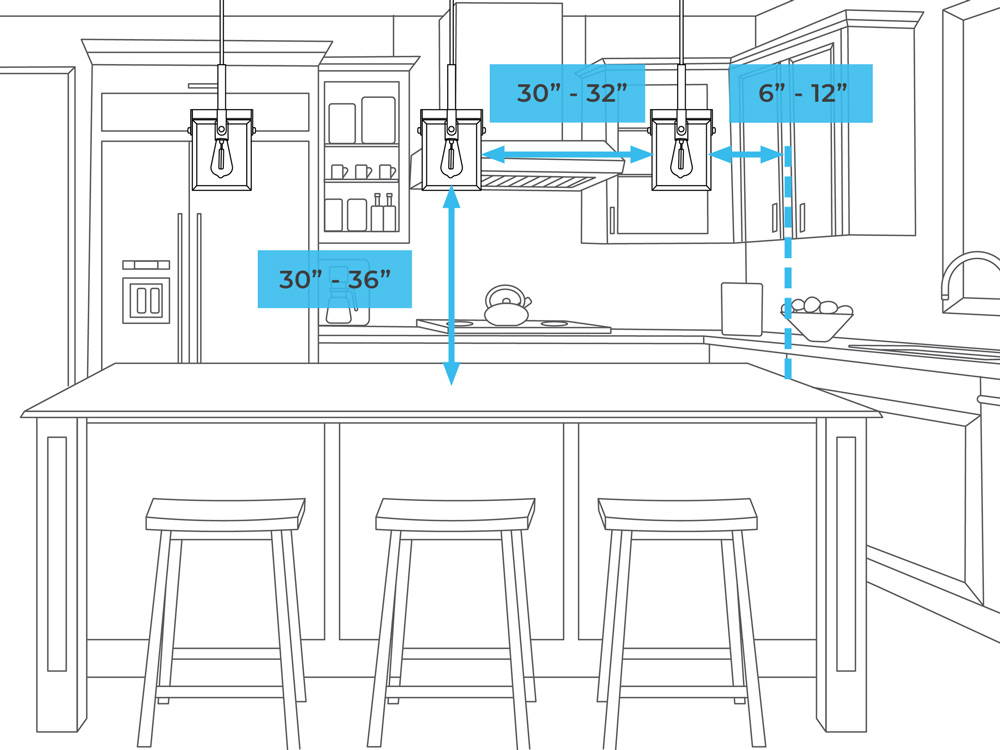
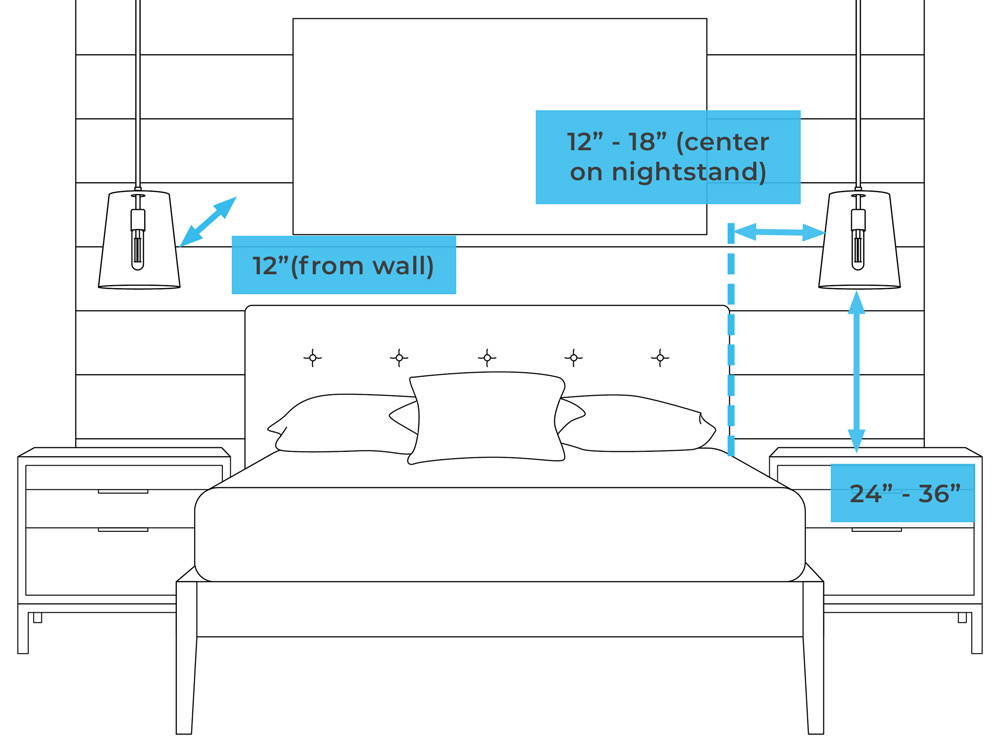
When hanging pendants on the opposites of a bed, hang them 24 to 36 inches from the top of the nightstand and a minimum of 12 to 18 inches from the edge of the bed, centered on the nightstand width. For better lighting throughout the room, hang the pendants 12 inches or more from the wall.
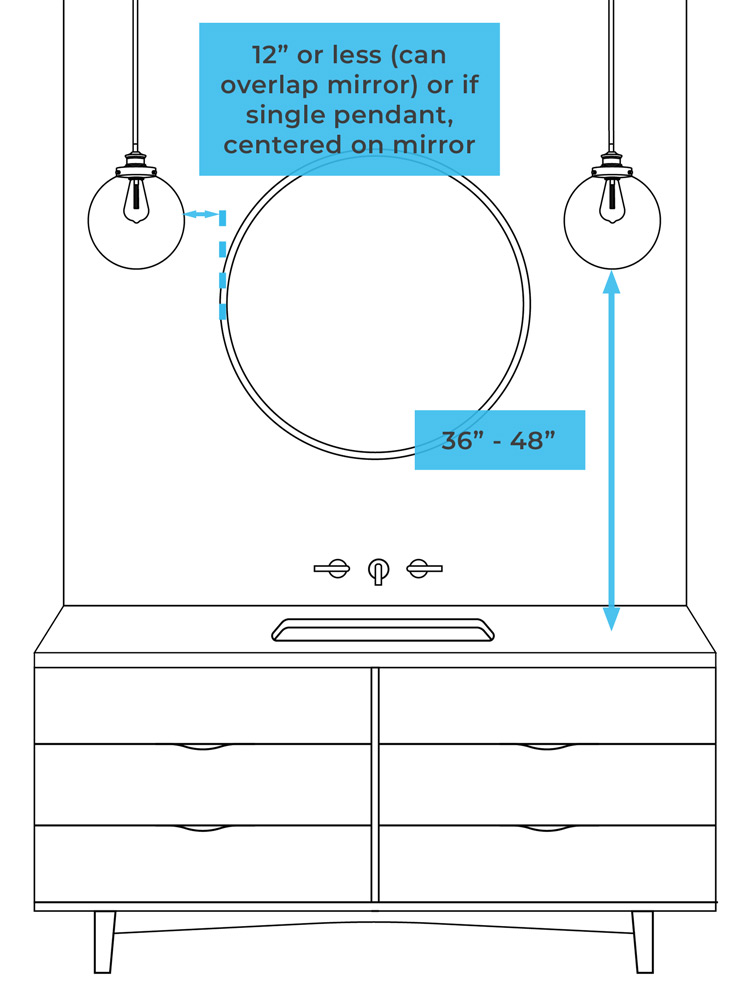
In the bathroom, pendants should be hung on opposite sides of the mirror and at a height of 36 to 48 inches. The pendants should be 12 inches or less from the edge of the mirror and can overlap the edges if desired. If hanging a single pendant, it should be centered on the mirror.
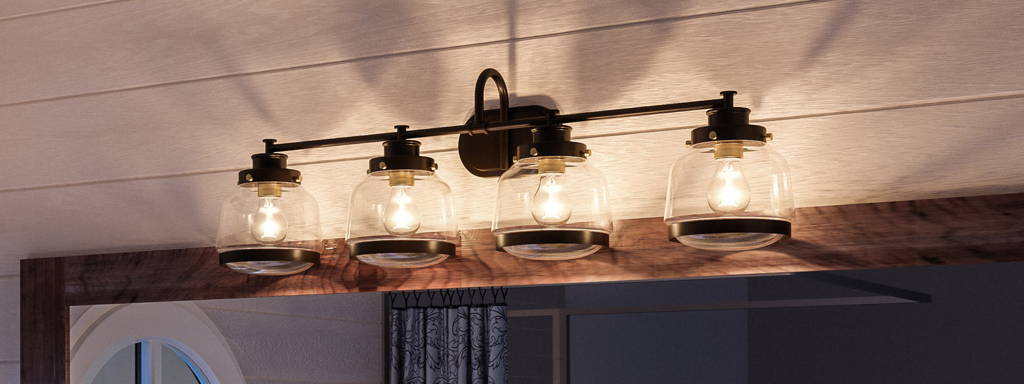
BATH VANITY LIGHTS
Bathrooms are increasingly becoming places to relax and unwind with many homeowners opting to create spaces emulating hotel spas. To achieve this, selecting and hanging bathroom lighting is a critical piece of the puzzle and necessary for both form and function. With options ranging from sconces, bars and hanging lights, there are a many different directions you can go to create a luxurious and relaxing ambiance. Bath lighting is another place where bulb selection can enhance the creativity and personality of the space.
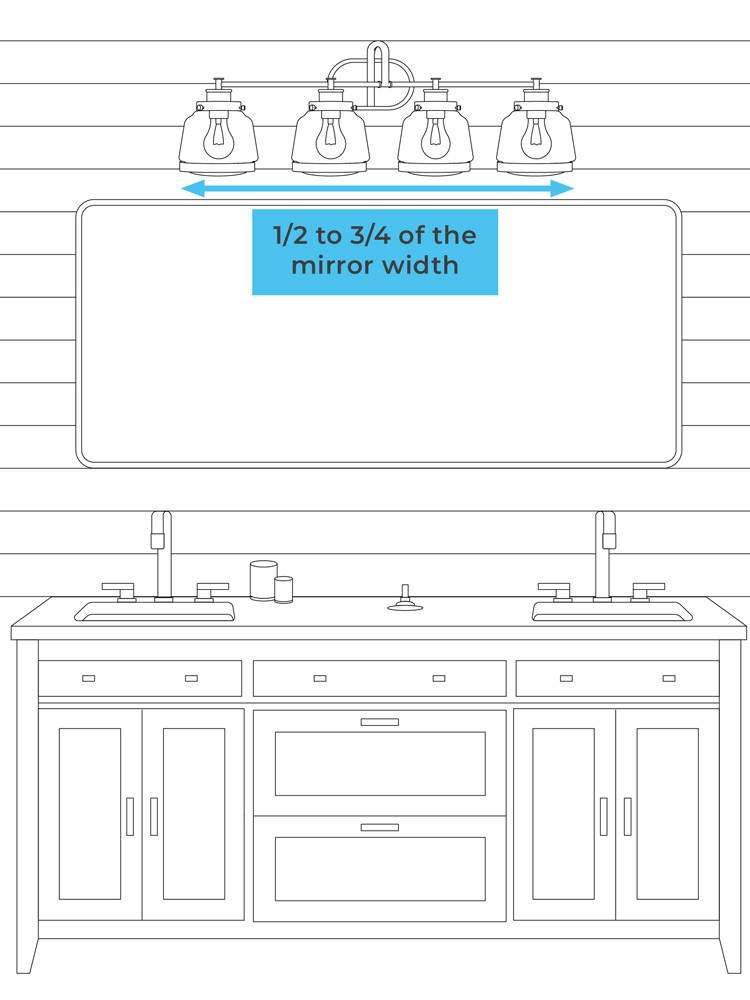
When hanging bath vanity lights, the width of the fixture should be 1/2 to 3/4 of the mirror width. There is no established height requirement and can be based on your preference.
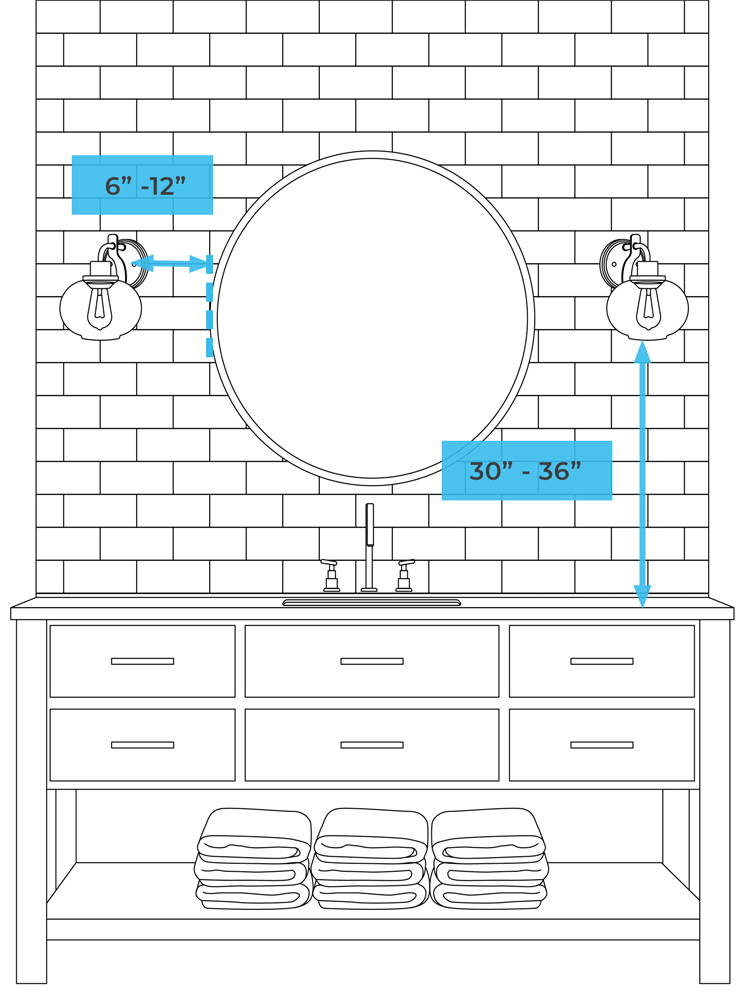
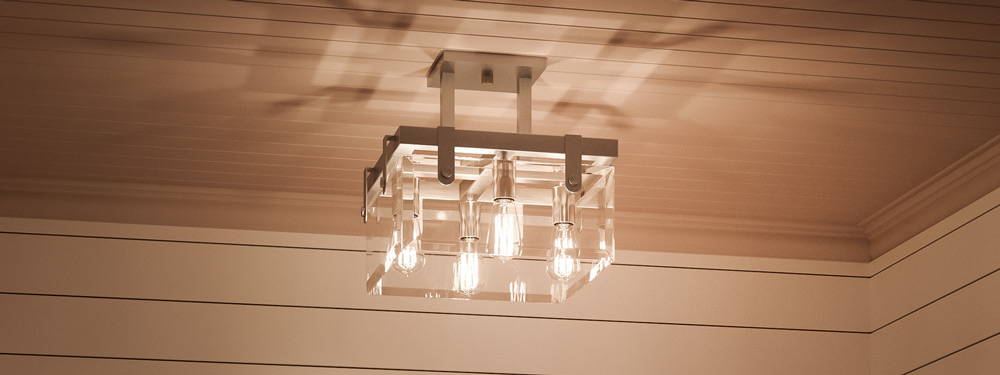
CEILING LIGHTS
Ceiling lights are another versatile fixture. Perfect for smaller spaces and found throughout the house, they are most often used in entryway/foyers and hallways. These fixtures can produce an abundant amount of light for their smaller stature, but are still fantastic statement pieces, allowing designers to still enhance the room motif and express style. There are different types of ceiling fixtures which include flush mount, semi-flush mount, and track lighting. Flush mounts are a great choice when the ceiling height is lower and/or if the space is on the smaller side. Semi-flush mounts are great when you have plenty of ceiling height and want to add more drama to the fixture. Track Lights are great in kitchens or workspaces where multiple lights are needed and in particular, when you want directional light at a variety of angles.
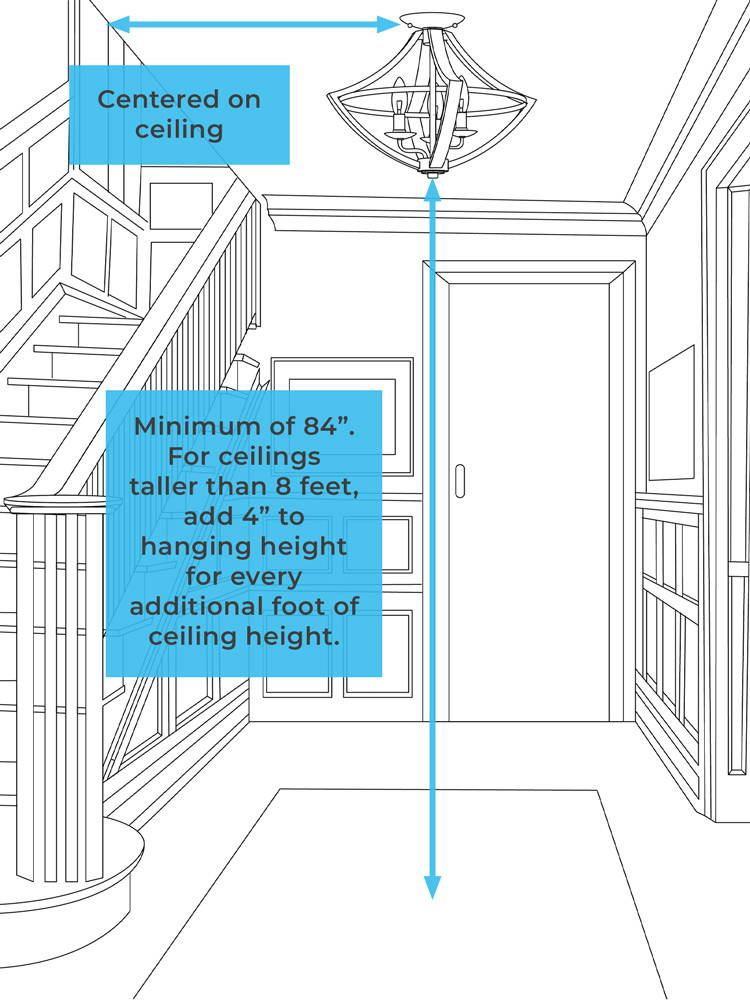
In entryways and foyers, ceiling lights should be centered on the ceiling and hung a minimum of 84 inches (7 feet) from the floor. For ceilings taller than 96 inches (8 feet), add 4 inches of hanging height for every additional 12 inches of ceiling height.
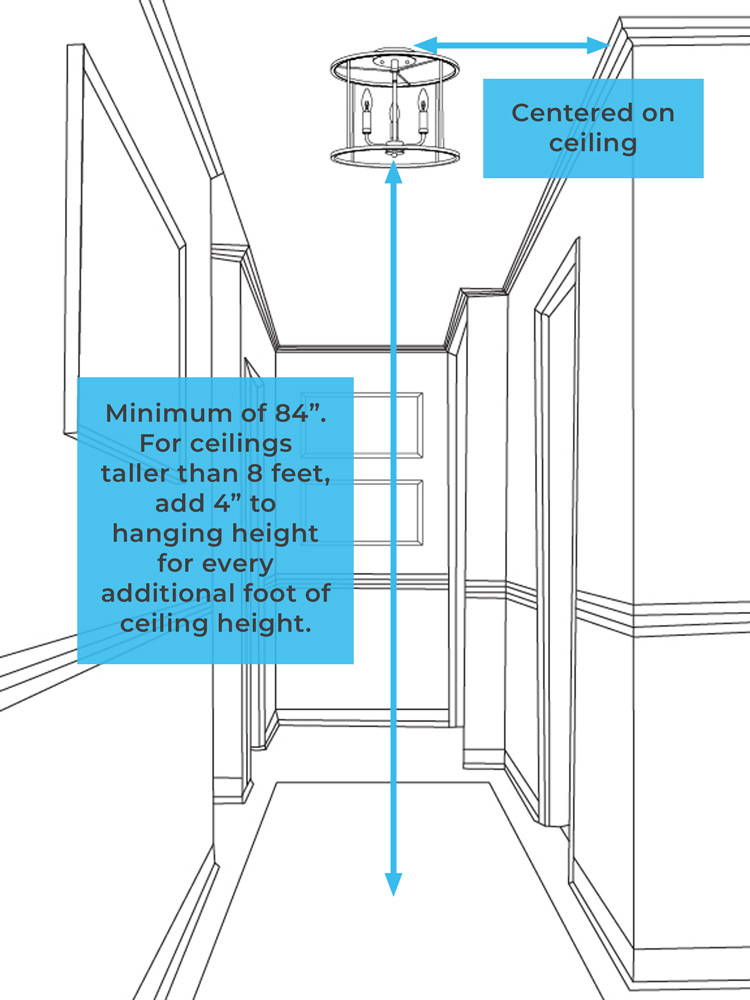
In hallways, ceiling lights should be centered on the ceiling and hung a minimum of 84 inches (7 feet) from the floor. For hallway ceilings that are taller than 96 inches (8 feet), add 4 inches of hanging height for every additional 12 inches of ceiling height.
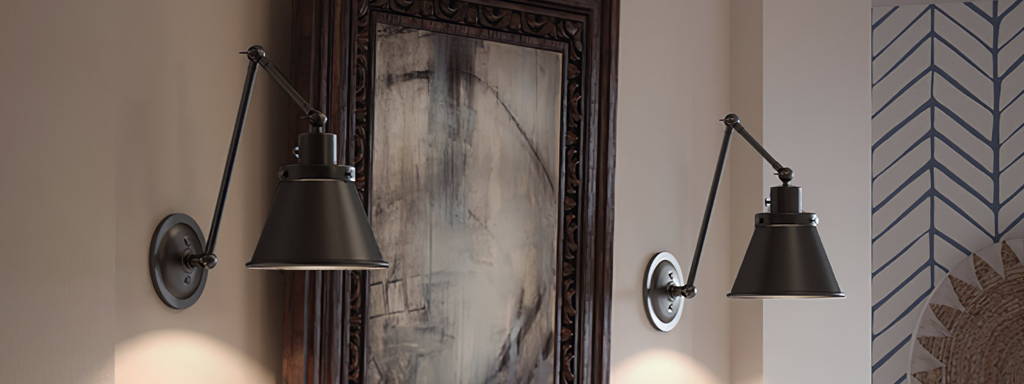
WALL LIGHTS
While all wall lights attach to a wall, they can be used to create uplight, downlight, or ambient light. Indoor wall lights are commonly found in entryways, hallways, bedrooms and bathrooms and are the perfect fixture when you want to create a balanced, symmetrical look. Early on, wall lights were simple and plain, but over the years, they've evolved into a decorative lighting category of their own with designers using them to enhance the decor and style of a space. Wall lights are a great fixture type to mix materials and have fun with finishes.
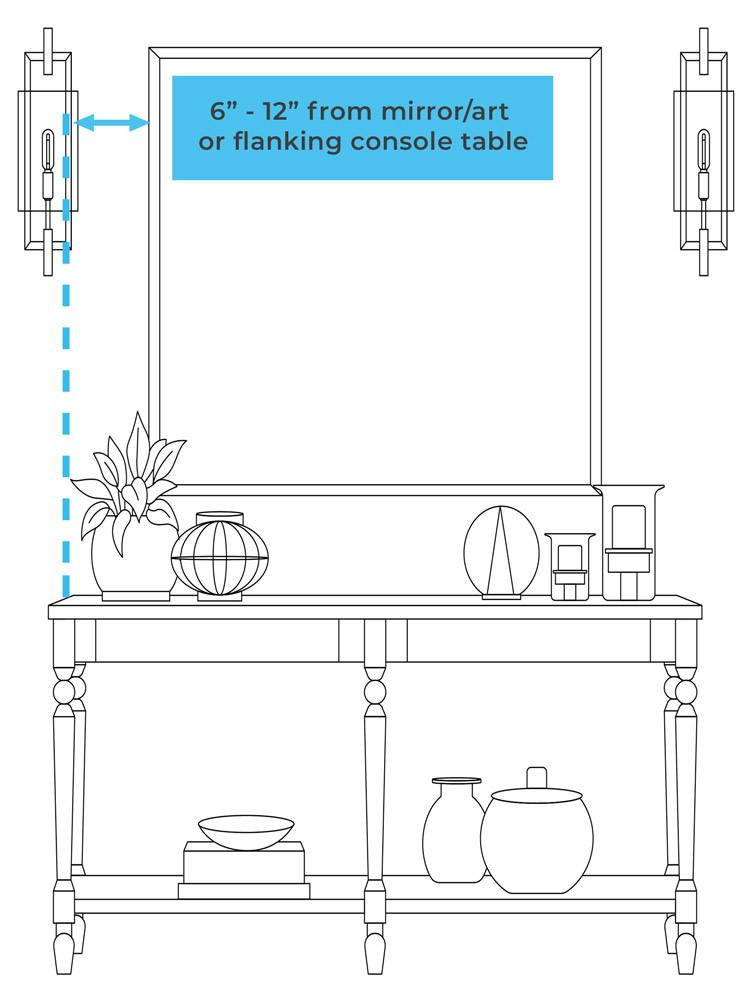
When hung on opposites sides of wall art or mirrors in an entryway, foyer, or hallway, ceiling lights should be hung so that they are flanking the console table or 6 to 12 inches from the mirror/art. The hanging height is flexible and a matter of preference.

When installed on opposites sides of a mirror, wall sconces should be hung 30 to 36 inches above the countertop and be spaced 6 to 12" inches from the edge of the mirror.
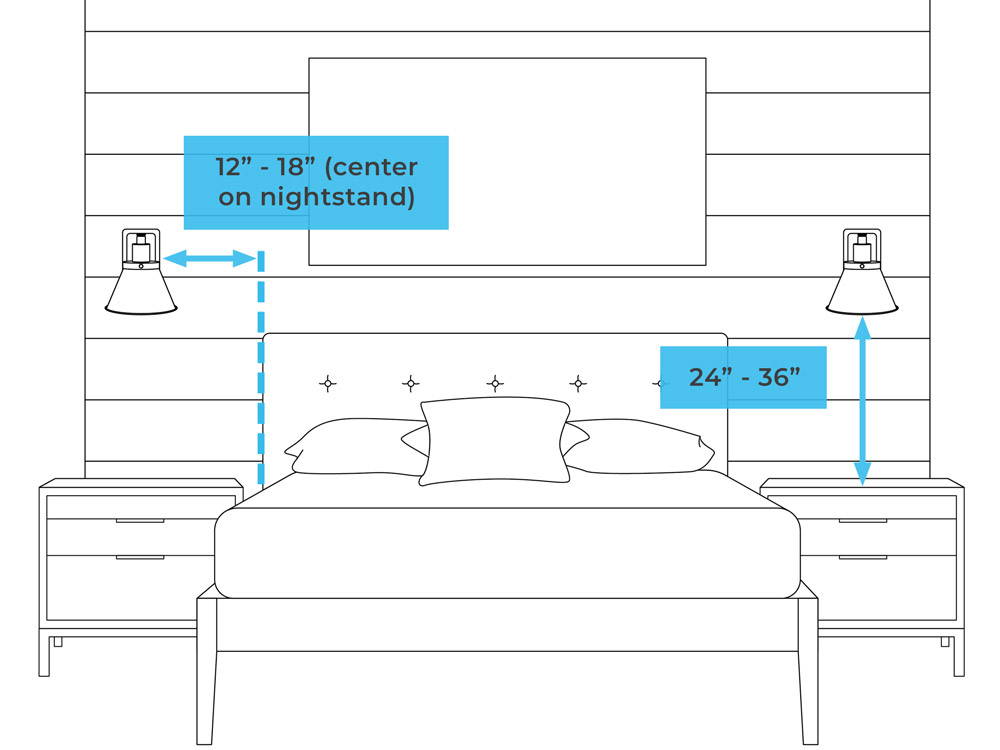
Wall sconces on opposites sides of a bed should be hung 24 to 36 inches from the top of the nightstands and a minimum of 12 to 18 inches from the edge of the bed, centered on the nightstand width.
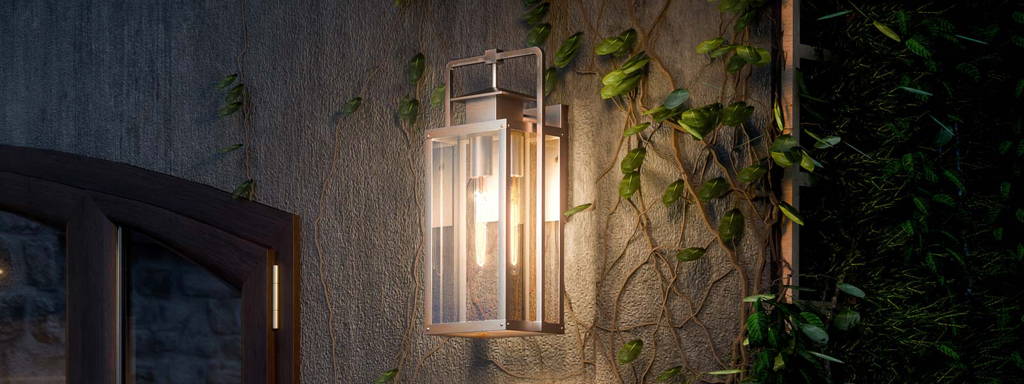
OUTDOOR LIGHTS
Often times, outdoor lighting is an after thought when people think of making lighting updates in their homes. However, outdoor lighting is as important, if not more so, due the utility and safety factor of proper outdoor lighting, in addition to the curb appeal it creates. When selecting outdoor fixtures, there's an added layer of consideration which involves the elements the fixture will be exposed to. Weather, temperatures and climates can all have an impact on the longevity of outdoor fixtures, which means quality construction is paramount. There are a variety of outdoor fixtures to consider when choosing outdoor lighting: wall sconces, ceiling lights, pendants and post/pier mount lights. Each come in a variety of styles and finishes which give you the option to complement the existing style of your home or get creative and add some personality.

Outdoor wall sconces should be hung 60 to 72 inches off the ground. When sizing outdoor wall fixtures, the height should be between 20% to 25% of the door height.

Outdoor hanging pendants should be hung a minimum of 84 inches (7 feet) from the base of the fixture to the floor. For ceilings taller than 96 inches (8 feet), add 4 inches of additional hanging height for every additional 12 inches of ceiling height.
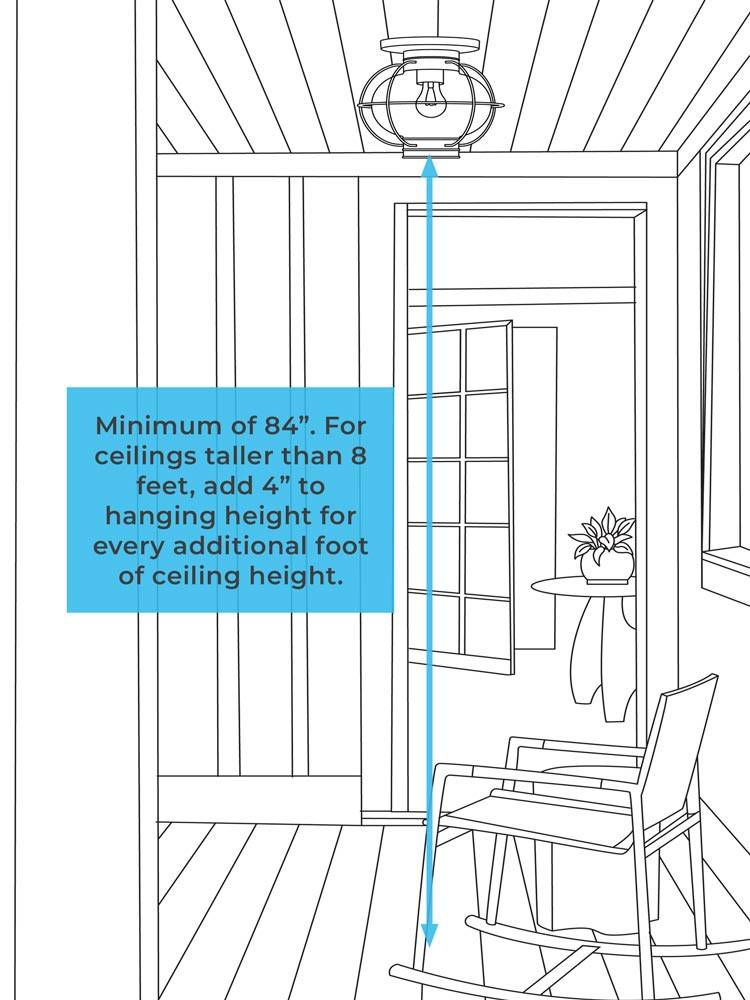
Similar to outdoor pendants, outdoor ceiling lights should be a minimum of 84 inches (7 feet) from the base of the fixture to the floor. When the ceiling height is greater than 96 inches (8 feet) add 4 inches of hanging height for every additional 12 inches of ceiling height.
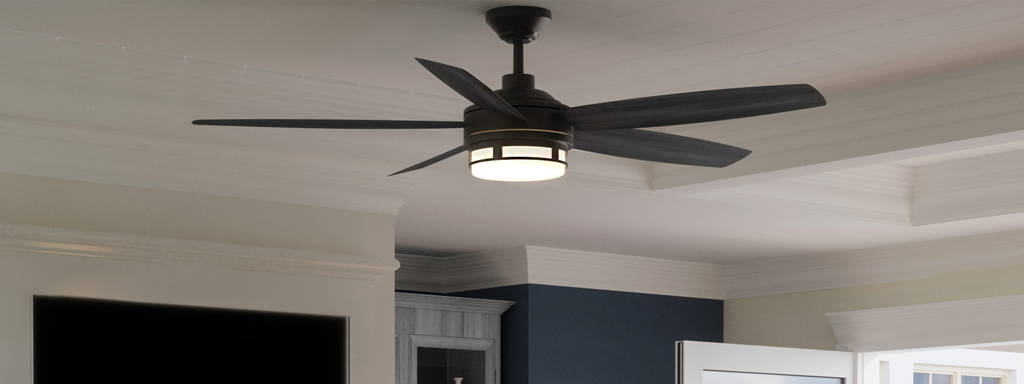
FANS
Ceiling fans are important fixtures to consider as they not only can provide ambient light in a space, but they can also play an important role in indoor and outdoor climate control. Thoughtful placement and sizing of fans can help homeowners reduce energy consumption as air is mixed and circulated throughout the house more efficiently. Similar to other light fixtures, ceiling fans come in a variety of sizes, styles and finishes which can not only enhance the ambiance of a space, but add to the comfort as well. When considering fans for a space, blade width and ceiling height are the most important factors to consider to ensure you're sizing the fan appropriately.

Ceiling fans should be sized based on the overall size of the room. In general, for larger rooms like living rooms and family rooms (greater than 300 square feet), consider fans with a minimum 60 inch blade span. When hanging ceiling fans, they should be a minimum of 84 inches (7 feet) from the base of the fan to the floor. Ideally, the fan is hung at 96 inches (8 feet) or 108 inches (9 feet).
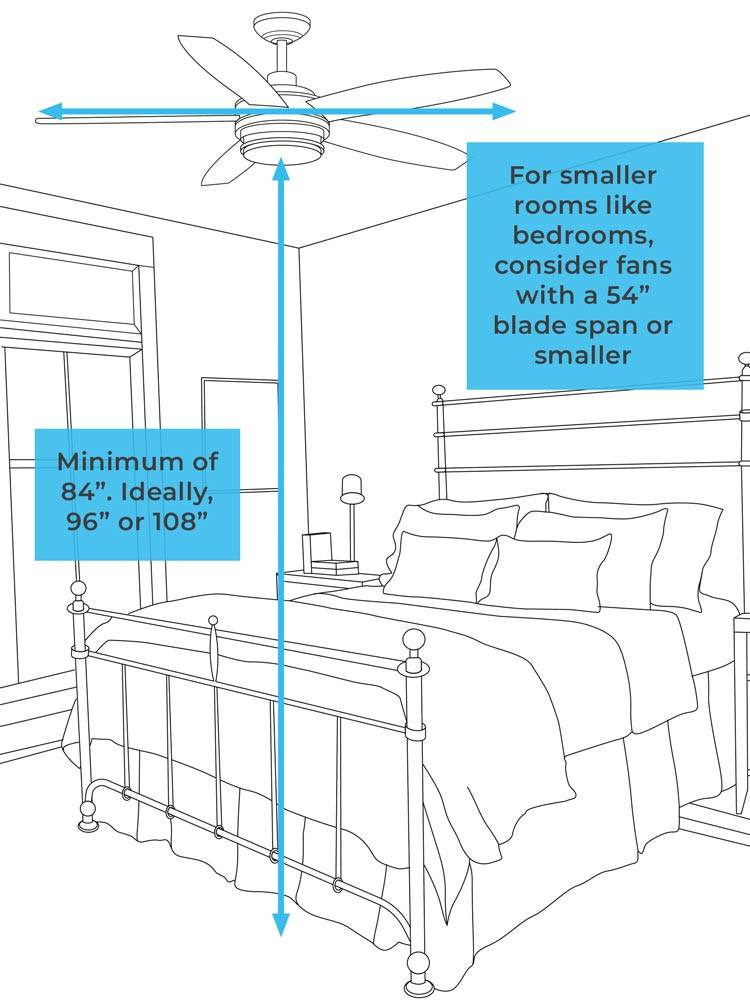
For smaller rooms like bedrooms (less than 300 square feet), consider ceiling fans with a 54 inch blade span or smaller. When hanging ceiling fans, they should be a minimum of 84 inches (7 feet) from the base of the fan to the floor. Ideally, the fan is hung at 96 inches (8 feet) or 108 inches (9 feet).